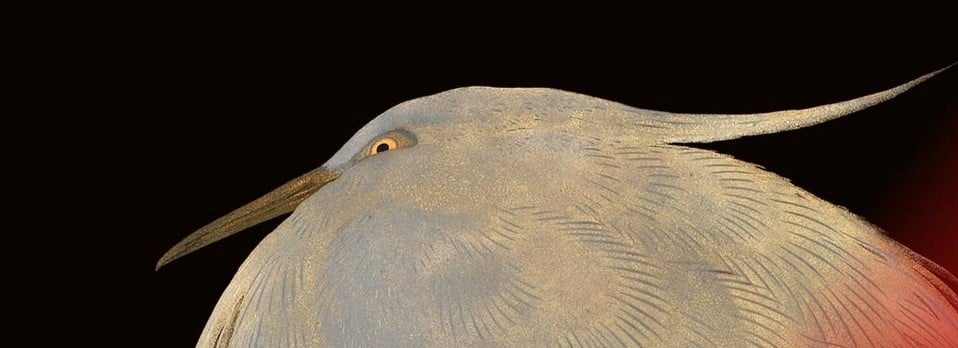
Box and cover
c. 1800 - 1859Wood, black and gold lacquer, silk, paper | 9.6 x 44.6 x 16.4 cm (whole object) | RCIN 41541
An oblong, rectangular box, with inset rim and shallow, flat-topped cover. The rims gold-lacquered and the interior surfaces polished black; the sides and top decorated in gold on a black ground, with an all-over vine-scroll design, with leaves in a paler tint and open blooms in gold, overlaid with several roundels of prunus blooms with coiled stems. On either side, fitted silver rings attached to bosses for the tasselled ropes of orange-red silk to tie round it, which have been removed and placed inside. Also inside, wrapped in patterned black and gilt paper, an oblong silver tray, with thickened rim and lobed, rounded ends, having a pierced panel in the centre and engraved designs, including a minogame turtle and a bird. A second wrapper, containing a bundle of silver and gold incense sticks.
Furniture as it is known in the West was almost entirely absent from Japanese interiors before the Meiji period. The exception to this rule was the kazaridana, an open cabinet with an assortment of asymmetrical cupboards and shelves. Until the late Edo period, these lavishly decorated units were reserved for the very wealthiest families. They were grouped in sets of three, known as santana (‘three shelves’), for a bride’s trousseau. A set comprised a kurodana (for cosmetic boxes), a shodana (for writing equipment and books) and a zushidana (for incense equipment and small boxes). By the sixteenth century, the relative size and arrangement of each of the three units had become standardised.
This lacquer cabinet is a zushidana, recognisable for the upward curving ends of the top shelf and two sets of double doors. The contrasting decoration of gold scrollwork and roundels of peonies on black lacquer matches a kurodana and shodana in the Royal Collection (RCINs 26049 and 26051). They almost certainly correspond to three items received by Queen Victoria from Shōgun Tokugawa Iemochi in 1860 and described by Sir Rutherford Alcock (1809–97), the British Consul-General in Japan, on 27 September 1859, as:
1 Kocladama (a sort of cabinet) [a kurodana, RCIN 26049]
1 Dioesu (a sort of cabinet) [the present zushidana]
1 Siodama (a bookcase) [a shodana, RCIN 26051]
The association with Iemochi is strengthened by the fact that smaller boxes from his gift, sent by Queen Victoria to the South Kensington Museum in 1865, bear an identical scrolling foliage design. A co-ordinating dressing case, dispatch case and pair of round incense boxes remain in the Royal Collection. The silk tassels on the matching case have evidently been stored within the box, for their striking red hue has not faded over time.
Text adapted from Chinese and Japanese Works of Art in the Collection of Her Majesty The Queen: Volume III and Japan: Courts and Culture (2020)







